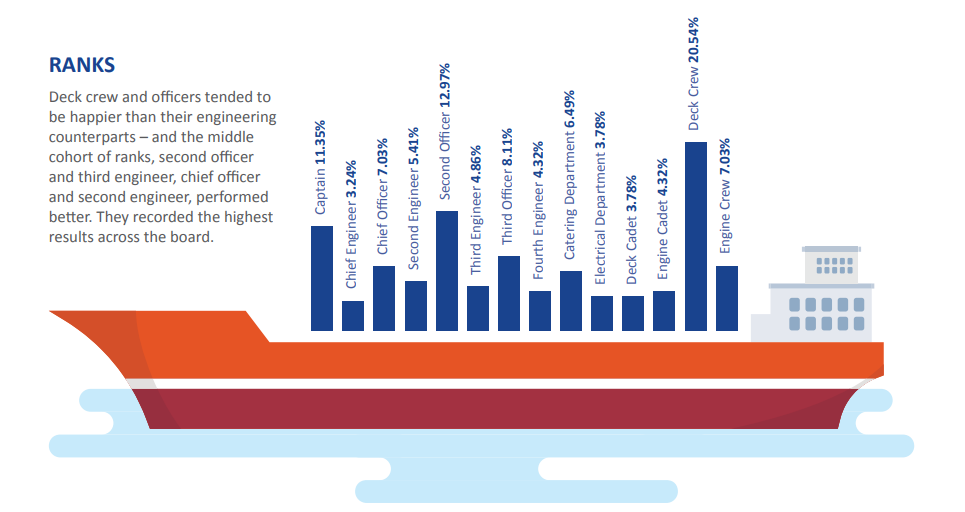The Mission to Seafarers has published the latest of its ongoing Seafarer Happiness Index reports, revealing a growing link between onboard connectivity and seafarer happiness levels. Overall Seafarers’ Happiness Index figures have shown a rise, and while it is obviously early days, it is positive to see growth across various key issues.
The report is based on the findings of a recent survey conducted by the Mission between January and March this year, in which seafarers were asked to rate their happiness out of ten on a variety of measures.

Highlights
- The average Seafarers’ Happiness level expressed by respondents was up from 6.25 out of 10.0 in 2017 to 6.69 in this first quarter of 2018.
- The happiest tranche of respondents was in the 25-35 year age group – and once again, these figures were hugely impacted by the ability to access the internet and to feel connected with the shore.
- Once again, respondents from South East Asia tended to record higher happiness marks in their responses.
- Deck crew and officers tended to be happier than their engineering counterparts – and the middle cohort of ranks, second officer and third engineer, chief officer and second engineer, performed better. They recorded the highest results across the board.

- Female seafarers marked themselves lower than the general average this time around.
- Seafarers on container vessels once again were the highest in terms of happiness. Of the major constituent vessel types, bulk carriers were the worst performing – but these were also on the rise this quarter.
- The issue of shore leave saw a positive shift in sentiment, but it is not yet clear the effects of new legislation are being felt.
- Wage sentiment rose too – rather than much focus on the level of wages, though there was some disquiet about stagnation, the main problems were around timely payments.
- The parallel issues of food, health and exercise saw rises – there were many comments about the quality of Cooks, and the importance of ingredients. Seafarers value these hugely, and where there is a sufficiently high spend on food, where Cooks are able to prepare good and varied, culturally sensitive menus – then these are happy seafarers indeed.
- Training saw a rise too in this quarter. There was a positive sense from respondents about the importance of their career progression, and most felt that their employers were supportive and looked to provide them with the tools they needed.
- Unfortunately, data of onboard interactions were seen falling. Comments about issues such as harassment and even racism were noted, and it is an obvious area to monitor. Given the rising global tide of nationalism, it could well be that some attitudes or views are filtering into the seafaring population.
- The issue of workload saw a surprising rise this time around.
- Seafarers’ welfare facilities ashore also saw a rise in positive sentiment, and respondents time and again stressed just how important it is to have access to the support, interaction and facilities that the centres provide. The only negatives were that, as has been covered in the shore leave question, it can be too hard and expensive to get off the vessel.
Where? –> Respondents from South East Asia tended to record higher happiness marks in their responses. Steven Jones, founder of the Seafarers Happiness Index commented: Although overall we still see that the industry is still struggling with seafarer happiness, these findings represent a very real opportunity for shipping companies to achieve a ‘quick win’ for welfare. Increased access to Wi-Fi onboard can make an instant and measurable difference to seafarer happiness, and happier employees means fewer sick-days, fewer accidents, better employee retention and a positive reputation for the employer. A clear benefit to owners and seafarers alike. The overall rate of seafarers happiness places crews in the ‘struggling zone’ on the UN Happiness Reports’ Catril Scale. The UN reports that people at this level of happiness are prone to more than double the amount of sick days and are more likely to smoke and eat an unhealthy diet. Further details may be found herebelow:





























































